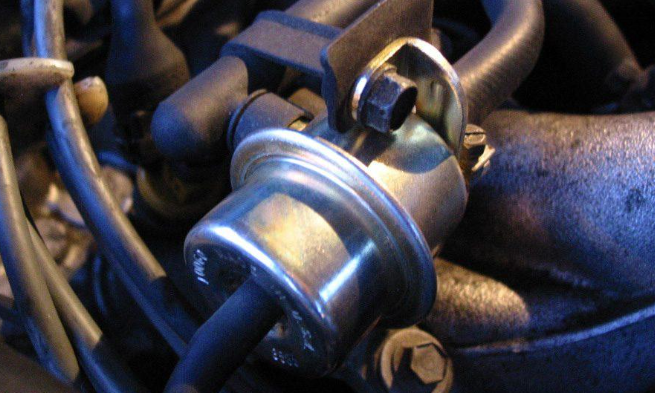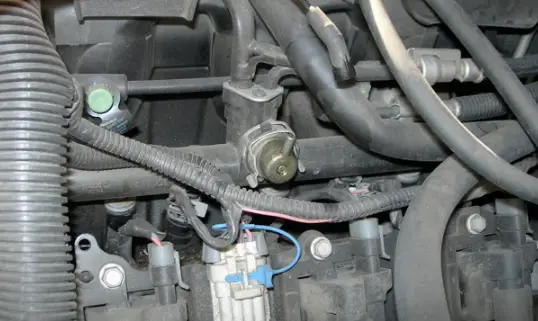Running a 5.3L Vortec engine can be challenging, and there are many reasons for this. One such reason is a bad pressure regulator, which can cause its own set of issues that are important to be aware of to prevent damage to other parts. This article provides an overview of the symptoms and signs associated with a faulty 5.3 fuel pressure regulator for this engine type.
Signs Of A Bad 5.3 Vortec Fuel Pressure Regulator
It is essential to know the primary signs that indicate a terrible 5.3 fuel pressure regulator, including hard starting, rough idle, and not-so-satisfactory engine performance. However, other symptoms should be taken into account as they can also lead to such conditions; thus, it is essential to consider all possibilities when attempting to identify the source of an issue.
🚨You may be interested in: 5.3 Oil Pickup Tube O-ring Symptoms
List Of 5.3 Vortec Fuel Pressure Regulator Symptoms:

By understanding the symptoms of a faulty 5.3 fuel pressure regulator, one can quickly and effectively diagnose engine problems, thus avoiding unnecessary trouble and significantly hastening the repair process.
1. Thick Layer On Spark Plugs
When dealing with a 5.3 Vortec fuel pressure regulator problem, one should begin by inspecting the condition of the spark plug. Removing it will likely show a thick black soot, indicating that the regulator has malfunctioned and both parts need to be replaced.
2. Dashboard Warning
If the engine light turns on, it can indicate an issue with the engine. It is important to note that this is not always the case, as other factors can also trigger it. To better understand what may be causing the issue, reading up on any additional symptoms associated with such an alert is recommended.
3. Rough Running
When the engine does not get an appropriate quantity of fuel for combustion, it may cause issues with the vehicle's smooth running. Symptoms include stalling at start-up and slightly hesitating when increasing or decreasing speed. Any aberrant behavior indicates something wrong with the fuel pressure regulator.
4. Engine Misfiring
Completely failing to start or misfiring are common symptoms of a bad regulator, making the air-fuel ratio inappropriate. This often results in an inability to start the engine even after multiple attempts at turning the keys.
5. Poor Acceleration
Individuals who drive regularly may be able to recognize this symptom. If the fuel pressure regulator malfunctions, one cannot accelerate as smoothly as before. Additionally, there will be an apparent decrease in acceleration power compared to usual. It is essential to remember that similar symptoms can occur from a dirty or faulty fuel injector.
6. Loud Fuel Pump
The fuel pump rarely produces much sound; however, if the pressure regulator has worn down, it can cause abnormal noise. It is essential to check for a bad fuel pressure regulator to keep the fuel pump functioning correctly.
7. Low Fuel Efficiency
When the regulator sends more fuel than usual, it is logical to assume that fuel efficiency will decrease. In extreme cases, the drop in mileage can be drastically noticeable; this symptom should not be overlooked. When a faulty regulator causes an engine to work harder, more fuel gets consumed, resulting in increased costs for gas and lower mileage overall.
8. Seeing Black Smoke
Seeing black smoke from the exhaust is another common symptom of a bad regulator. In most cases, this is caused by either a leak in the regulator or internal damage. It's important not to delay when dealing with this issue and seek assistance immediately.
9. Dripping Fuel Out Of Tailpipe
Owners of vehicles have reported that fuel dripping from the tailpipe can indicate a faulty fuel pressure regulator.
Pro Tip: To check for gas in the line and ensure that the regulator is wrong, it is necessary to pull the fuel pump's fuse, start, and let it run out of gas entirely before changing the regulator without a tool to release pressure. This process must be followed to change the regulator effectively.
What To Do When You Detect A Bad 5.3 Vortec Fuel Pressure Regulator?
Have you detected a faulty regulator? Nothing to do but replace it. Hiring a mechanic is always an option, but those confident enough can easily manage the replacement themselves. It may take some time, but replacing the wrong part is possible with proper knowledge and guidance.
The simplest way to explain the steps is to provide a detailed description.
- Depressurizing the fuel system requires loosening the filler cap as a first step.
- The individual must then look under the hood to locate the fuel pump relay. Upon finding it, they should remove it from the fuse panel.
Tip: It is recommended to take the help of a car's owner manual if one cannot find what they are looking for. Additionally, it is essential to ensure that the engine has been depressurized before starting any work - this can be done by shutting down the engine.
- If the engine ceases to run, it indicates no fuel pressure left in the system. To begin with, one should switch off the ignition and disconnect the wiring from the negative terminal of the battery.
- Subsequently, one must remove the vacuum line attached to one side of the pressure regulator.
- If necessary, secure and retain the clip for the fuel pressure regulator using a pair of screwdrivers.
- After completing this step, remove the O-ring and filter the screen from it accordingly.
- Finally, install the new part after lightly coating the O-ring with fresh engine oil as required.
Once the aforementioned steps have been completed, it is necessary to reconnect the battery terminal. One should turn on the ignition for 3 to 5 seconds to prime the fuel system. This will initiate a successful fuel system priming and ensure the vehicle's reliability.
Is Replacing A Bad 5.3 Vortec Fuel Pressure Regulator Expensive?
Keeping the labor cost aside, it can be estimated that approximately 300 dollars would need to be spent on a new regulator. To help minimize this cost, seeking online deals is recommended.
However, considering that labor costs differ from state to state, an expenditure of up to 500 dollars should still prove enough to resolve the issue.
How Often Should You Service 5.3 Vortec Fuel Pressure Regulator?
Owners and car mechanics agree that scheduled maintenance should always include a check of the regulator, and for best results, new owners should replace their fuel filter every two years or 3000 miles. It is also vital to ensure that only good-quality fuel from reliable gas stations is used to keep all parts functioning correctly over time.
Was this page helpful?


More important content about Tips and Advice
Porsche Cayenne Years To Avoid
Subaru Legacy Years To Avoid - 5 Worst Years
Pt Cruiser Years To Avoid
Use 5w30 instead of 0w20 - Advantages and Disadvantages
Tractor Dashboard Symbols And Meanings
Tips and Advice
Subaru Legacy Years To Avoid - 5 Worst Years
Pt Cruiser Years To Avoid
Use 5w30 instead of 0w20 - Advantages and Disadvantages
Tractor Dashboard Symbols And Meanings
Suzuki Sx4 Years To Avoid - 5 Worst Years
Cummins ISX Years To Avoid and Why